Two loudspeaker M and N are located 20m apart and emit sound at frequencies 118Hz and 121Hz, respectively. A car is intially at a point P, 1800m away from the midpoint Q of the line MN and moves towards Q constantly at 60km/hr along the perpendicular bisector of MN. It crosses Q and eventually reaches a point R, 1800m away from Q. Let v(t) represent the beat frequency measured by a person sitting in the car at time t. let vP, vQ and vR be the beat frequencies measured at locations P,Q and R, respectively. The speed of sound in air is 330ms−1. Which of the following statement (s) is (are) true regarding the sound heard by the person?
The plot below represents schematically the variation of beat frequency with time.
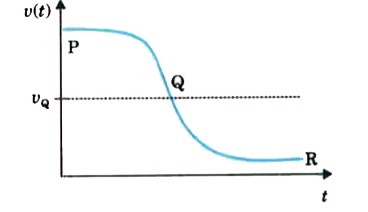
VP+VR=2VQ
The plot below represents schematically the variation of beat frequency with time
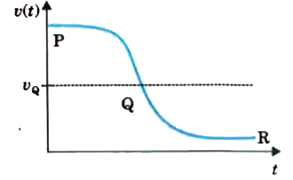
The rate of change in beat frequency is maximum when the car passes through Q
The correct Answer is:A, B, D
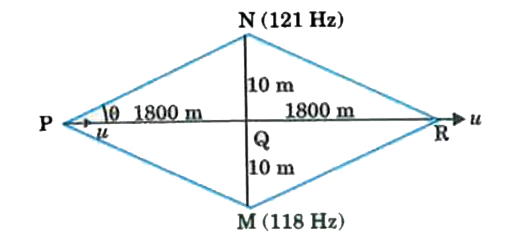
Let u be the speed of observer moving alon PQR.
Frequendy received at P : f=f0(υ+ucosθ)υ
Here υ is speed of sound.
Beat frequency
VP=f1−f2(υ+ucosθ)υ(f01−f02)
=v+ucosθυ(121−118)
⇒ VP=3v(v+ucosθ)
As the time passes value of θ increases to 90∘
Beat frequency at point Q :
⇒ VQ=121−118=3
Beat frequency at R :
⇒ VR=3υ(υ−ucosθ)
We can see that graph shown in option A is correct.
VP+VR=3υ(v+ucosθ)+3υ(v−ucosθ)=6
Hence, we can see that VP+VR=2VQ
Hence, option (b) is correct.
Further by differentiating V, we can see that rate of beat frequency is maximum when observer crosses point Q hence, option (d) is also correct.
Similar Questions
Two loudspeakers M And N From another's 20 m Respectively 118 Hz And 121 Hz Emit the sound of the dot P Line MN Is located on the perpendicular length of MN Midpoint between Q From 1800 m Is at a distance. A car point P Point to Q Towards 60 km//hr Starts walking at a steady pace. car Q Cross point R Goes where the point R the dot Q From 1800 m Is at a distance of. The person sitting in the car t At a frequency v(t) Measures the dot P, Q, R Versions respectively v_(P), v_(Q), v_(R) is. Speed of sound in air 330 ms^(-1) is. Which / which statement is / are true about the sound made by the person sitting in the car
View Solutionਇੱਕ ਕਾਰ ਸਮੇਂ t=0 ਤੇ ਬਿੰਦੂ P ਤੋਂ ਚੱਲਣਾ ਸ਼ੁਰੂ ਕਰਕੇ ਬਿੰਦੂ Q ਦੇ ਰੁਕ ਜਾਂਦੀ ਹੈ। ਕਾਰ ਵੱਲੋਂ t ਸੈਕਿੰਡ ਵਿੱਚ ਤੈਅ ਕੀਤੀ ਦੂਰੀ, x ਮੀਟਰ ਵਿੱਚ x=t2(2−(t3)) ਨਾਲ ਦਰਸਾਈ ਜਾਂਦੀ ਹੈ। ਕਾਰ ਨੂੰ Q ਤੱਕ ਪਹੁੰਚਣ ਵਿੱਚ ਲੱਗਿਆ ਸਮਾਂ ਪਤਾ ਕਰੋ ਅਤੇ P ਅਤੇ Q ਦੇ ਵਿੱਚ ਦੂਰੀ ਵੀ ਪਤਾ ਕਰੋ।
View Solutionदो लाउडस्पीकर M एवं N जो की एक दूसरे से 20m की दूरी पर है, क्रमशः 118 Hz एवं 121 Hz की ध्वनि उत्सर्जित करते हैं। बिन्दु P रेखा MN के द्विभाजक लम्ब पर स्थित है तथा MN के मध्य बिन्दु Q से 1800 m की दूरी पर है। एक कार बिन्दु P से बिन्दु Q की तरफ 60km/hr की स्थित गति से चलना प्रारम्भ करती है। कार Q बिन्दु को पार कर अंततोगत्वा बिन्दु R के आगे चली जाती है, जहाँ बिन्दु R बिन्दु Q से 1800m की दूरी पर है । कार में बैठा व्यक्ति समय t पर विस्पंद-आवृत्ति (beat frequency) v(t ) मापता है । बिन्दु P, Q, R पर विस्पंद - आवृती क्रमश: vp,vQ,vR है । ध्वनि की हवा में गति 330ms−1 है। कार में बैठे व्यक्ति द्वारा सुनी गयी ध्वनि के बारे में निम्नलिखित में से कौनसा/कौनसे कथन सत्य है/ है ?
View SolutionP तथा Q एक दूसरे से 27 किमी. दूर है। दो रेलगाड़ियाँ क्रमश: स्थान P तथा Q से क्रमश: 24 किमी/घंटा तथा 18 किमी/घंटा की गति से एक ही ओर चलना प्रारम्भ करती है। वे Q से दूर एक बिन्दु R पर मिलती है। QR की दूरी क्या होगी।
View SolutionP and Q are 27 km away. Two trains with speed of 24 km/hr and 18 km/ hr respectively start simultaneously from P and Q and travel in the same direction. They meet at a point R beyond Q. Find distance QR
View SolutionDetermine the distance between two points :
a. 'P' and 'Q' where 'P' is at 2 and 'Q' is at 9.
b. 'R' and 'S' where 'R' is 6 m away from point 0 towards right and 'S' is 6 m away from point 0 towards left.
View SolutionIn figure below a charge Q is fixed. Another charge q is moved along a circular arc MN of radius r around it, from the point M to the point N such that the length of the arc MN = 1. The work done in this process is :
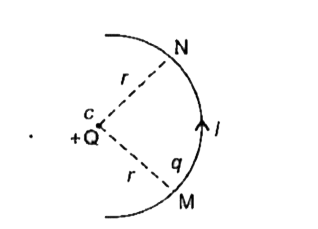
View SolutionTwo identical loudspeakers are located at point A & B,2m apart. The loudspeakers are driven by the same amplifier (coherent and are in phase). A small detector is moved out from point B along a line frequency below which there will be no position
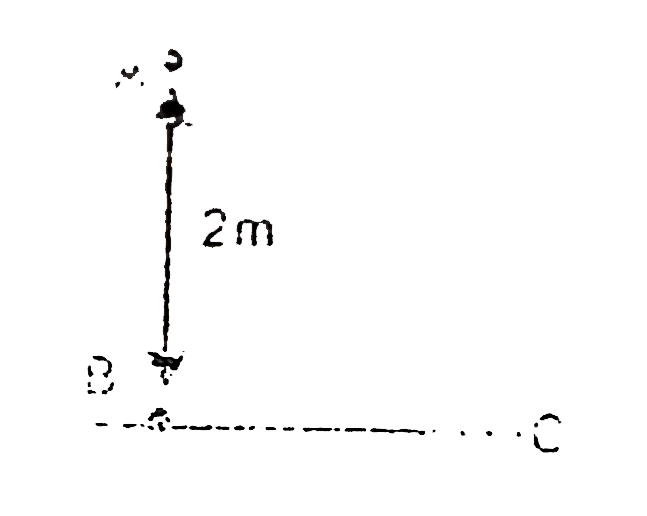
View Solution

